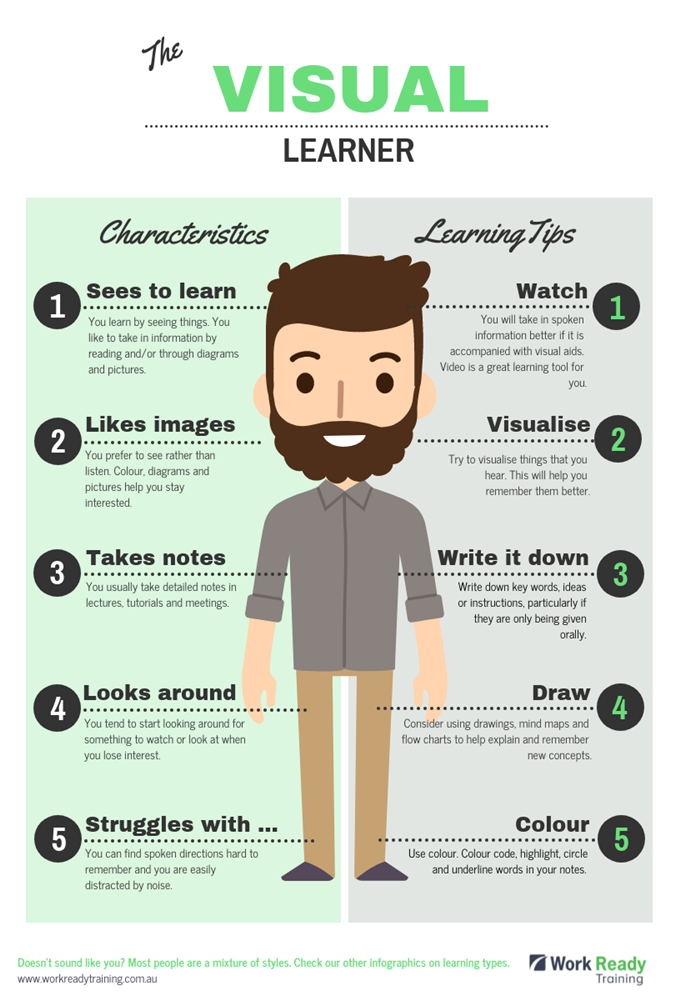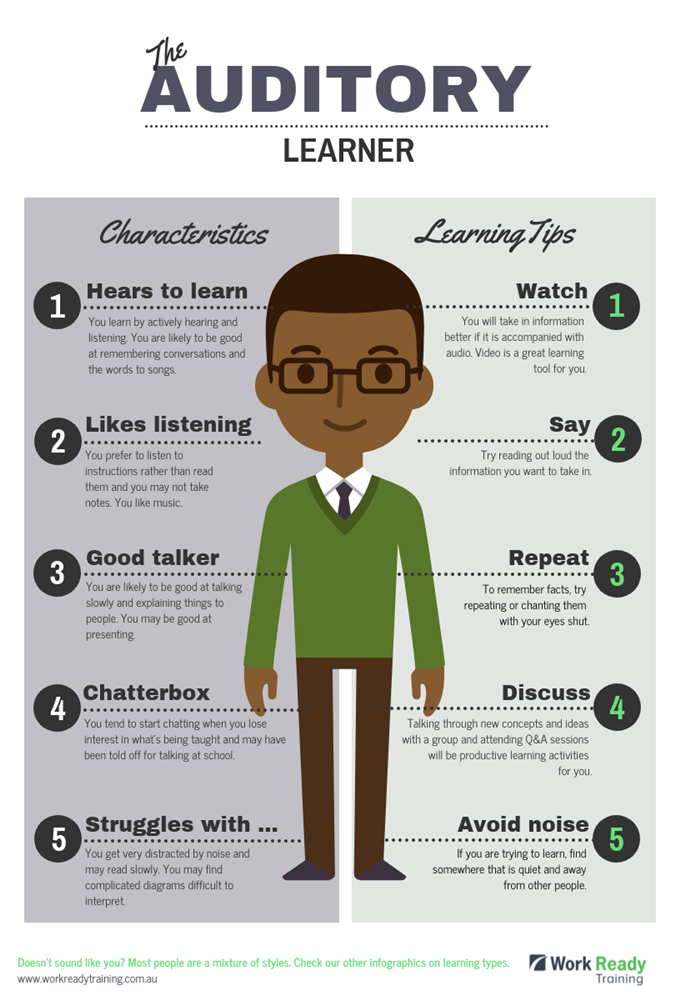It has been said that student learning styles fall into three “categories”. These learning styles can be found within Neil Fleming’s VARK model of Student Learning. VARK is an acronym that refers to four different learning styles: Visual, Auditory, Reading/Writing Preference, and Kinesthetic. As a tutor, it is important to be flexible with your tutoring methods in order to accommodate the varying learning styles of your students. Here, we have provided some tips to help you master working with different learning styles!
Tutoring Tips for Visual Learners: 
- make flash cards for key terms/concepts
- use graphs, tables, and charts
- draw diagrams on the wall/paper
- use illustrations
- use mnemonic devices, acronyms, visual chains, mind maps
- have students take notes during sessions
- use the wall for you and the student to write questions and answers
- use color-coded highlighting
- use visual analogies to explain things
- use photographs and videos when possible
Tutoring Tips for Auditory Learners:

- Read explanations out loud
- have students record sessions, discussions, and lectures (if allowed) to listen to later
- say words in syllables
- use mnemonics and word links
- encourage the student to participate in class – join discussion, ask/answer questions
- have the student explain material to you
- when learning new things, have the student state the problem out loud then reason through it out loud
- if the student is willing, have them make up a song using the subject material. Often the crazier it is, the better it works.
Tutoring Tips for Kinesthetic Learners:
- Point to the subject matter in the book or on the board
- When possible, make models that demonstrate key concepts
- Encourage students to sit at the front of the classroom to stay focused

- Have students make flash cards for key terms or for each step in a procedure (have them practice putting them in order for the latter)
- Use and encourage gestures
- Have students write by hand while you read or talk; write lists repeatedly
- Have student pick up the books when they read them
- Actively have students use the computer to reinforce learning using their sense of touch
- Use rhythm (beats) to memorize or explain something
Tutoring Tips for Reading & Writing Learners:

- Read and write!
- Have students take lots of notes – in session, but also encourage them to do so in class
- Have students re-write their notes from class
- Make lists of information – categorize different types
- Turn diagrams and charts into words
